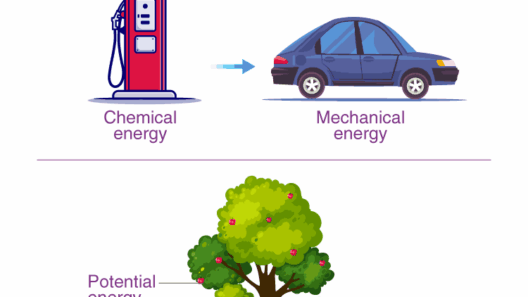In an environmentally conscious world, understanding the terminology associated with climate change is imperative. One of the key phrases that often crosses our lips is “energy conservation.” A crucial concept intertwined with sustainability and resource management, energy conservation plays a role in mitigating the adverse effects of climate change. But have you ever pondered: Are you pronouncing it correctly? This seemingly simple inquiry poses a playful challenge—can we navigate the labyrinth of phonetics and semantics to grasp this vital term? Let’s delve into the intricacies of pronunciation and explore the broader implications of energy conservation.
To begin with, it is essential to dissect the term “energy conservation.” The word “energy” is derived from the Greek word “energeia,” meaning activity or operation. When spoken correctly, it phonetically resembles “EN-er-gee.” The emphasis lies on the first syllable, opening with a crisp ‘e’ sound—think of the initial sound in “end.” Next comes “conservation,” a compound word where the syllable breakdown is as follows: “con-ser-VA-tion.” Here, the main emphasis is on the third syllable, lending importance to the term’s vitality and significance in discourse.
Now that we’ve conquered pronunciation, let’s explore why this term holds such gravitas in contemporary society. With increasing levels of carbon emissions and dwindling natural resources, the act of conserving energy assumes paramount importance. Energy conservation refers to efforts made to reduce energy consumption; it stands as a cornerstone of sustainable living. By understanding this term, we can advocate for practices that promote efficient energy usage.
Many may wonder how energy conservation translates into everyday practices. It encompasses a myriad of strategies, from simple household adjustments to more systemic alterations in governmental policies. For instance, turning off lights in unoccupied rooms, or using energy-efficient appliances can dramatically reduce energy consumption. These actions, though seemingly innocuous, culminate in substantial energy savings, thereby mitigating the carbon footprint.
As we cycle through these practical implementations, an intriguing challenge emerges: How can we inspire our communities to adopt energy-conserving behaviors? The discourse surrounding climate change often evokes feelings of dread and urgency, which may inadvertently lead to apathy or disengagement. Thus, engaging individuals through playful yet informative discussions about energy conservation can ignite a spark of enthusiasm.
Creating awareness can take various forms—a social media campaign with catchy tags, an informative workshop emphasizing the importance of energy efficiency, or community challenges that encourage collective efforts in conserving energy. Envision a neighborhood competition aimed at lowering energy consumption over a month; the allure of winning could transform energy-saving habits into a community-wide movement. With creativity and zest, there are manifold ways to express the concept while emphasizing its wickedly crucial implications.
Moreover, the role of education in fostering an energy-conscious society cannot be underestimated. Incorporating energy conservation into school curricula can instill a sense of responsibility in the youngest members of our society. By teaching children about energy sources—both renewable and non-renewable—they can grasp the significance of making environmentally sound choices. Contacting local educational institutions to present workshops on energy conservation can further facilitate this enlightening process.
Another avenue worth exploring is the intersection of technology and energy conservation. Smart home devices, for example, can drastically enhance energy management. Thermostats can learn user behaviors and minimize heating and cooling when spaces are unoccupied. This automation illustrates how embracing modern innovation can dovetail with energy conservation efforts. While technology might seem indifferent to environmental concerns, it can act as a powerful ally in the quest for sustainability.
At an organizational level, businesses, too, have a pivotal role in fostering energy conservation. From small startups to multinational corporations, embedding energy conservation initiatives into corporate responsibility frameworks demonstrates a forward-thinking ethos. Employees can be encouraged to engage in energy-saving practices at work, which could include optimizing office layout to maximize natural lighting or instituting policies that advocate for virtual meetings over travel.
Interestingly, international discourses on energy conservation are also gaining momentum. Climate conferences and agreements represent concerted efforts among nations to collectively address energy consumption and its repercussions. Nations are assessing, implementing, and sharing best practices for energy conservation as part of their commitment to combat climate change. Engaging in this dialogue reminds us that our individual actions are part of a larger tapestry of global efforts—a reminder of our collective responsibility.
In conclusion, the act of correctly pronouncing “energy conservation” is but a stepping stone into the deeper understanding and appreciation of this vital concept. As stewards of the Earth, we each have a role to play in implementing energy-saving strategies in our lives, our families, and our communities. We possess the tools to motivate ourselves and others, creating a ripple effect that can lead to significant change. Through educational outreach, community initiatives, and a conscious shift in our lifestyles, we can nurture a culture of energy conservation. Yes, it starts with how we say it, but ultimately, it transcends to how we enact it.








